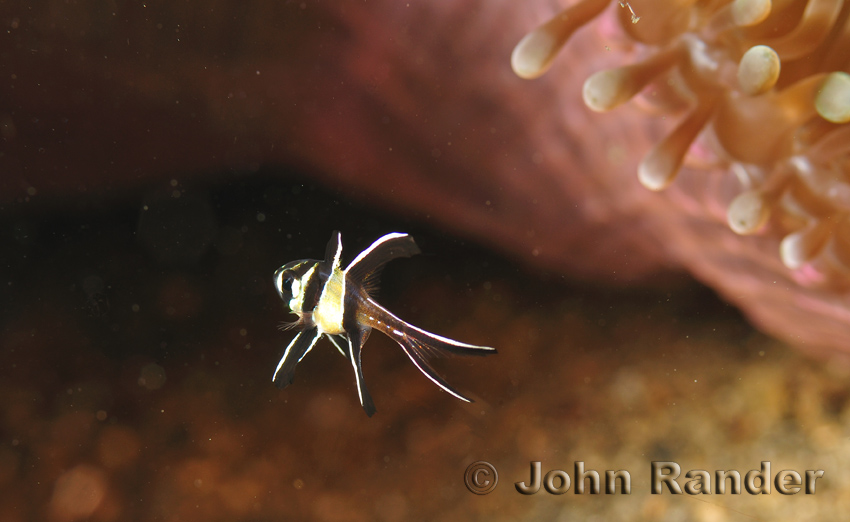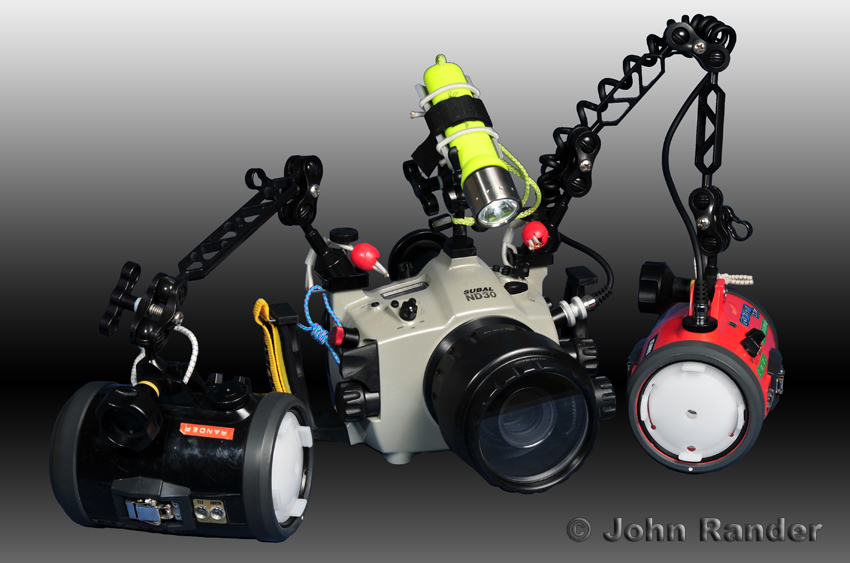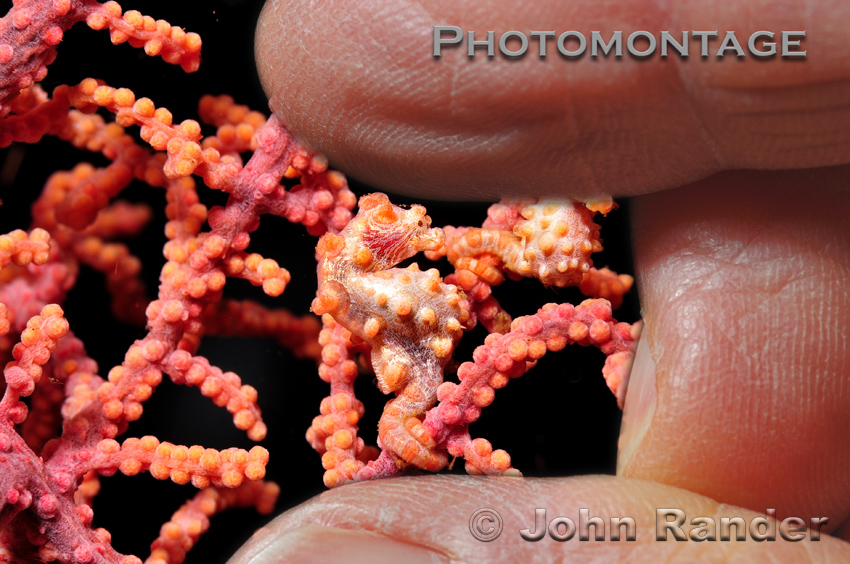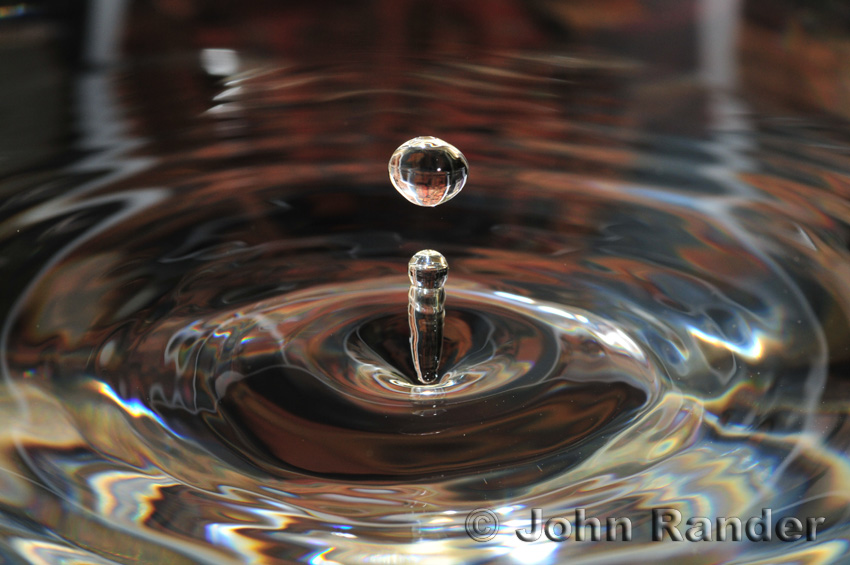

Digital UW Photography with the Nikon D300
2008-2009 marks my switch over from film to digital UW photography.
I bought a Nikon D300, in May 2008, it’s my first DSLR. After some months spent shooting all kinds of photos from water droplets, honey bees and field mice to stars, I felt that I was ready. I ordered the underwater housing in October, a SUBAL ND30. Putting aside the issues of budget, I have been really delighted by the digital. Why Nikon? One of my deciding factors was that all of my existing Nikon lenses and accessories could be used. The D300’s 12.3 million pixel CMOS sensor chip made the choice much easier. Similarly for the housing, I have had years of faithful service from my previous SUBAL housing for Nikon’s F90x, and all of my existing ports are compatible with the new housing. So the choice was fairly evident. So what is new?
- First, I find digital simply more “fun” than film. The big issue here is that you can see what you have done without waiting for chemical processing. Any idea can be quickly tested; in difficult lighting situations this is very important.
- The D300, like most semi-professional DSLR today, uses a 15.8 x 23.6 mm chip (called DX format), 2/3 the dimensions of the 24 x 36 mm slide format . Choosing a camera with a DX format sensor has several implications, the most important of which is the reduction in angular coverage with respect to 24 x 36 mm format. This acts as if one multiplies the 24 x 36 format lens focal length by 1.5 (example: a 60mm lens on a DX format camera will have the same angular coverage as a 90mm lens on a 24 x 36 mm format camera).
First pool tests in November 2008 of the D300 equipped with the AF 10.5mm f/2.8 fisheye lens.
The list below summarizes (in no particular order) some important issues as I see them today between the DSLR and old film SLR:
What’s improved/better for digital underwater photography?
Applies for any DSLR:
- Can check photo for exposure & focus immediately (boosts creativity). In addition, images are quickly available for use (web, publication, and printing).
- No longer limited to 36 photos/dive as with film camera.
- Can use camera for several dives without opening housing; lens & port can be changed without removing the DSLR.
- Shooting conditions can be changed while underwater.
- Less gears & mechanics in housing (no longer an f/stop ring on the lens, and many controls have become push-buttons).
- No hassles looking for a refrigerator for film in the tropics.
More specific to the D300:
- Optimal sensitivity is 200 ISO (4x less flash power needed than with 50 ISO film, and faster shutter speeds without flash). Furthermore, the D300 gives very good results at 400 ISO (even 640 ISO).
- DX format means more magnification in macro-photography (also for telephotos when birding).
- Auto-focusing is faster & better. Autofocus technology has changed considerably since the CAM 246 module on the F90x. The D300 is equipped with Nikon’s newly developed Multi-CAM 3500 autofocus module with 51 focusing points (a record number). It locks on moving subjects, helped by the new Scene Recognition System based on information from the 1005 RGB segments of the exposure sensor. One selects an AF point manually to position the subject, having beforehand selected the number of neighboring AF points (among 51, 21, or 9 points) which will be used to focus if the subject moves (the response time depends on the number of points selected; 21 points is often a good compromise). In order to activate predictive lock-on for moving subjects, the focusing control must be set to continuous servo mode (AF-C). This system can efficiently lock on a tiny macro subject jiggling around, as well as it can on a bird in flight.
The D300’s autofocus performs well on tiny macro photography subjects (here a juvenile Banggai cardinalfish taken with Nikon’s AF 105mm f/2.8D lens), as it does on birds in flight (rollover image taken with Nikon’s AF-S ED 300mm f/4 lens).
What’s worse about DX format?
- DX format means wide-angle lenses loses angular coverage: need a dedicated AF-DX 10.5mm fisheye.
- DX format is 1.5 times more sensitive to diffraction, introducing softening beyond f/11.
Beware old TTL strobes can damage the D300!
- Nikon DSLR automatic flash protocol (iTTL) is not compatible with the older TTL mode. Older flashes can only be operated manually. In addition, the 5-pin connection on certain TTL flashes (like SEA&SEA YS strobes) can damage the D300. SUBAL provides for both types with 5-pin (iTTL) and 3-pin (old TTL in Manual) plugs on the housing PCB.
What’s different going to digital imaging?
- There are image quality options: JPEG, TIFF, and RAW (Nikon calls it NEF). The common digital image format, JPEG, is a lot like slide film. It requires a fairly correct exposure and color balance at the moment the image is taken. This is due to the limited range of data (8 bits) used store the information. RAW (NEF) has much more latitude for corrections later since it stores the images with more information (12 or 14 bits). This is a lot like “negative” film. In UW photography, where color balance is a delicate issue and where precise exposure with flashes in manual mode is difficult, RAW (NEF) is the evident choice. Plan for sufficient image memory when traveling.
- Post-processing uses software not chemicals and is done by you (better), not a photo lab. My choices in this domain are personal and somewhat arbitrary: I correct, if needed, all RAW (NEF) images in Nikon Capture NX and save them as 16-bit TIFF files. My “workhorse” for all TIFF and JPEG images is ADOBE Lightroom. Otherwise, any special cases/projects/watermarking pass through ADOBE Photoshop (a pen tablet such as the WACOM is quite useful).
What’s remained unchanged moving from film to digital?
- Weight & water-drag in current (not for BCD pocket!); things would be slightly improved if one uses smaller flashes.
Macro-photography setup used for the first dives at Lembeh Strait. Here the D300 was equipped with the AF Micro-Nikkor 105mm f/2.8D. Two unequally adjusted light sources are used, as in studio photography: a "main" source and a "fill-in" source. The LED focusing light is essential for AF focusing on tiny subjects.
What about details in macro-photography?
This rollover image shows a D300 photo of a Bargibanti pygmy seahorse taken at Lembeh Strait, including a photomontage giving the true scale. The rollover shows a zoom of the seahorse's head. Taken at f/18, the depth of field was judged more important than the slight diffraction softening.
Finally, chose well the underwater housing's viewfinder:
If you are considering an underwater housing for your DSLR, what I really find useful underwater is SUBAL’s large GS magnifying (2.5x) viewfinder. Several housing manufacturers offer similar solutions…
Results from the first seawater immersion can be seen in my portfolio from:
Four dives in Lembeh Strait
Click here to see my portfolio: Lembeh Strait
Learning to use the D300 took me from water droplets and field mice, to stars...
© John Rander, all rights reserved.





